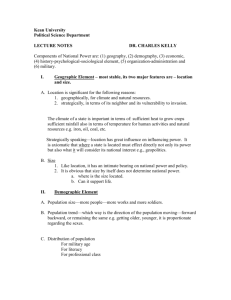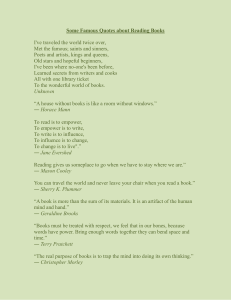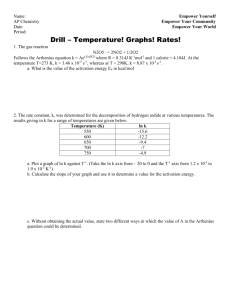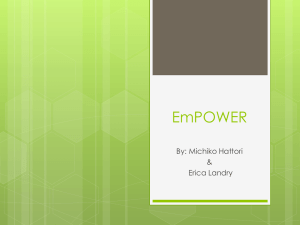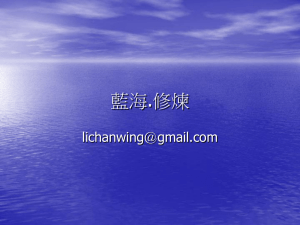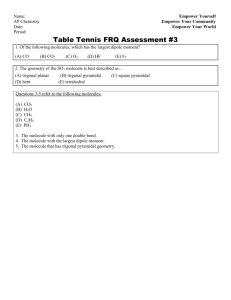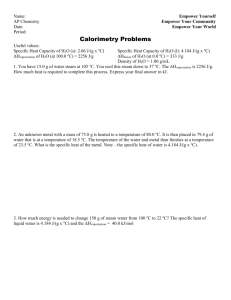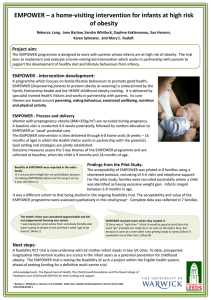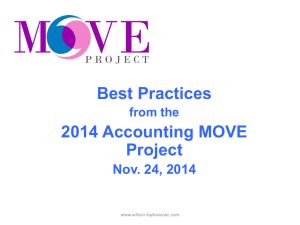Action Learning and Coaching at LG
advertisement
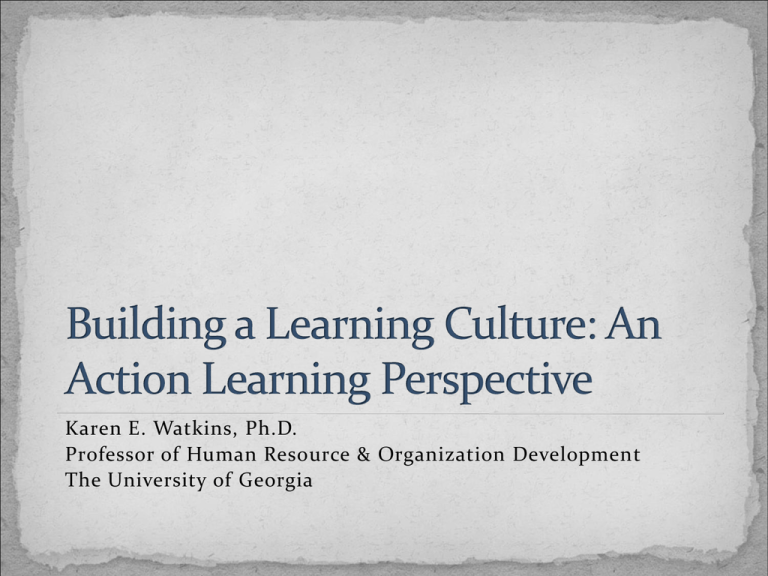
Karen E. Watkins, Ph.D. Professor of Human Resource & Organization Development The University of Georgia Context– A Knowledge Economy Amid Economic Uncertainty Repositioning Learning as part of the organization’s DNA-Learning our way through Creating A Learning Organization Strategically intervening o First Diagnose where the organization is now o Focus interventions on culture and leadership o Design learning in and through work– learning to take action OECD Report- The Global Picture GDP fell 4.1% Unemployment from 5.9% in 2008, to 8.5% in 2009 and 9.8% projected for 2010 Goods and services traded fell by 16% globally OECD/APEC Reports– Regional Differences China from 9% in 2008 to 7.7% in 2009 and back up to 9.3% in 2010 India from 6.5% growth in 2008 to 5.9% in 2009 and 7.2% in 2010 U.S.– down significantly in GDP, slight increase of .9% projected for 2010 For individuals, financial Instability leads to Widespread fear of job loss Fear of disclosure, of sharing knowledge More people doing the work of 2 or 3 people Postponing retirement, and older than average employees High need to learn new skills, to perform well With lower morale, less time, less cognitive capacity Need for Financially-Strapped Governments to focus support on most needy Retraining unemployed Support for displaced workers [food, shelter, health insurance] Yet cannot do this when also shoring up banks, major industries A Knowledge Economy Is Where the Generation and Exploitation of Knowledge Plays the Predominant Part in the Creation of Wealth Permeates the Whole Economy, Not Just the Computer and Telecommunications Industries Foundation -- a Highly Skilled Labor Force Trends of particular importance in a financial downturn include Rethinking workplace learning as creating a learning infrastructure and Changing organizational capacity to learn. We do this by Emphasizing leadership development—changing mental models Creating a learning infrastructure that includes formal, informal, and technology-enabled learning approaches – an option rich modular design architecture Fostering organizational responsibility for creating a learning culture Human resource development is "the field of study and practice responsible for the fostering of a long-term, work-related learning capacity at the individual, group and organizational levels within organizations.” Learning must be part of the DNA of the organization Watkins and Marsick (1993) define the learning organization as “one that learns continuously and transforms itself… Learning is a continuous, strategically used process— integrated with and running parallel to work” (p.8). The model emphasizes three key components: 1) systems-level, continuous learning; 2) in order to create and manage knowledge outcomes; 3) that lead to improvement in the organization’s performance, and ultimately its value, as measured through both financial assets and non-financial intellectual capital Learning organizations facilitate learning within and between Individuals Teams Organization Environment Global Organization Team Team Individual Leaders model learning Connect the organization to its environment Empower people toward a collective vision Establish systems to capture and share learning Encourage collaboration and team learning Promote inquiry & dialogue Create continuous learning opportunities Global Organization Team Team Individual Learning is… the way in which people make meaning, acquire knowledge & skill To support individual learning, the organization needs to… Create continuous learning opportunities Promote dialogue and inquiry Team Learning is…. Mutual construction of new knowledge Capacity for concerted, collaborative action Encourage collaboration and team learning Organizational learning is… Organizational mental models, schema, “karma in the walls and halls” How vision, strategy, culture, leadership, structure, processes, communication, management practices, etc. come together to support & align learning with mission and goals To Support Organizational Learning, the Organization must… Establish systems to capture and share learning Empower people toward a collective vision Global learning is…. Thinking globally and systemically Crossing boundaries of environmental or societal impact, including those that affect the quality of life and morale of people connected with the organization Embodied in leaders who “live” a learning culture -- walk the talk To Support Global Learning, the Organization Must.. Connect the organization to its environment Have leaders who model and support learning at all levels Learning organizations have systems that: Capture Share Use knowledge Leaders must champion this. Lack of investment in early 2000’s left many organizations behind Realize focus on leadership development is imperative Extensive use of informal learning strategies such as action learning, executive coaching Creating a Learning Culture A learning culture is one in which learning is a deliberate part of the organization’s strategy Change is understood to be a learning process- and change is continuous Leaders model learning themselves, reward learning, and use mistakes as opportunities to learn The Little Boy and the Ice Box Air Traffic Controllers Study The School Superintendent Study Develop individual capabilities To know self and impact on others To develop communication and You as a Learner influencing skill To effectively coach others Develop high performance teams To effectively solve complex, cross- functional problems To empower people to enact the organization’s vision Build organizational capacity To transform To develop a culture of learning Your Organization’s Learning Culture LC Adapted from Reg Revans In Action Learning, people: Use work on a real business problem to develop and learn Work in teams, take action to solve problem Learn how to learn from action Helped by learning coach to balance work with “learning-fromexperience” And by changing themselves-- change the organization Action Learning is a primary example Starts with a real problem Draws on relevant knowledge Analysis of the problem Trial of solutions in the organization Test is what works-- actual business results In this economic context it could be argued that the survivors will be those with the strongest pool of talent, most able to handle change and uncertainty. Human capital resources are the bedrock of organizational capacity– our hope for the future. Organizations structured to recruit and develop talented people, led by individuals able to work across borders of many kinds, hard-wired to promote, capture and share learning, will have the core competencies needed in uncertain times.
